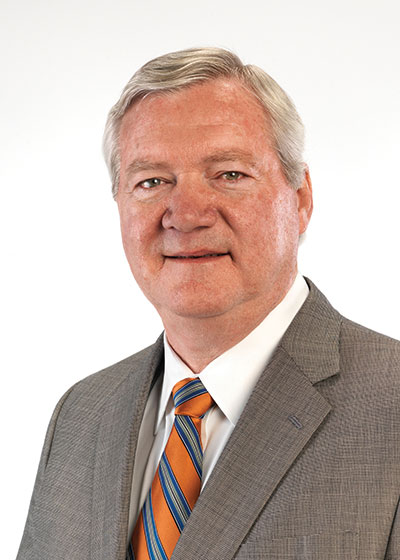2014 CEOs Who 'Get It'
The National Safety Council recognizes 10 leaders who demonstrate a personal commitment to worker safety and health

 |
 |
Rick Medlin
President and CEO
Fruit of the Loom Inc.
 |
Accomplishments
|
Why is safety a core value at your organization?
Our employees are our most valuable asset, and because we believe that, our commitment is to provide a safe working environment so at the end of the day we arrive safely home to our family and friends. This commitment stems from one of our core values – respect for people. We believe that fundamental to that core value is the necessity of providing all of our employees with a safe work environment.
Our company engages in various production processes, from purchasing cotton to produce yarn for our underwear and apparel products, to manufacturing gymnastic and sporting goods equipment. Many of those processes carry with them inherent safety risks that must be guarded against. We dedicate substantial resources to education and training for our employees to ensure the safety of the workplace. We also engage our employees directly in safety teams to encourage their direct input into health and safety process improvements.
Describe your journey to becoming a CEO who understands the importance of worker safety.
Safety is the beginning of our “Commitment to Excellence”; I have never seen a plant with a good safety process and accident record that was not also performing well in their commitment to cost, quality and service. Our core values start with “Respect for People,” and we believe that respecting people means that we have to create an environment in which they can be successful. “People do not care how much you know until they know how much you care.” We care enough to demand excellence in their commitment to safety. I have believed in and practiced this discipline since I was a line supervisor.
What is the biggest obstacle to safety at your organization, and how do you work to overcome it?
We operate manufacturing operations in numerous countries around the world. That obviously brings with it many differences in cultures and practices that have challenged our ability to ensure consistent workplace safety. To overcome that challenge, we have engaged and trained local experts to provide translations of not only policies and programs, but also in our educational material. We have implemented additional employee involvement teams in the past few years to engage and empower personnel in our decision-making practices. These teams have provided several successful process improvements not only in safety but in product development. This progression has revealed to our employees that they do make a difference and their pride and commitment to safety continues to grow.
How do you instill a sense of safety in employees on an ongoing basis?
Consistent training and education is the key factor to continuously connect with employees on our safety commitment. Our employees receive instruction and are held accountable for our policies and procedures through annual education, shift start-up meetings, and various safety campaigns. We also produce a monthly safety newsletter containing topics for work and home.
Typically, I visit our facilities on an annual or biannual basis to attend meetings and functions. During these visits I speak with employees at all levels of our organization, and safety is always a key topic of discussion. I also encourage employees to join our movement by getting involved in their facility teams, and to watch out for themselves and their co-workers.
We hold quarterly meetings with senior leaders, conferences with facility safety personnel and biannual facility management meetings. All of these meetings include safety successes and adversities. I challenge our leadership team and employees to create new ideas and benchmark with other companies. Risks are present all around us and we need to create solutions each and every day to overcome these risks and obstacles.
How does your organization measure safety? What are the leading indicators that show you how safe your organization is, and where do you see room for improvement?
Our company continues to track indicators such as injury and illness rates because these do provide information on potential improvements to our entire course of action. However, our best leading indicator is a detailed program put in place three years ago that measures each facility on its entire safety process.
The measurement has nine sections for which points are awarded or deducted based on findings by our corporate assessment team. We evaluate compliance with OSHA regulations and our company policies and procedures. This is a balance check to establish enhancement opportunities. Our measurement assessment includes the written programs; written program requirements; education; inspections; required postings; housekeeping and facility evaluation; recordkeeping; and assessment reports. The housekeeping and facility evaluation provides one of the best leading indicators for identifying and correcting methods to prevent incidents and risks. Because safety is an evolving process, improvements can always be accomplished through communication, employee engagement and education, and the measurement tool ensures we are frequently reassessing every facility for constant safety improvement.
Fruit of the Loom Inc., based in Bowling Green, KY, is a global manufacturer specializing in the design, manufacture and marketing of a number of iconic family apparel, athletic apparel and sporting equipment brands, including Fruit of the Loom®, Vanity Fair®, Spalding® and Russell Athletic®. All of the brands practice the relentless pursuit of better by striving to create innovative apparel and equipment that fits well, feels great and helps make amazing things possible. Fruit of the Loom Inc. actively seeks ways to be best-in-class in social and environmental responsibility in the communities it serves around the world. The company has approximately 32,000 employees worldwide.

